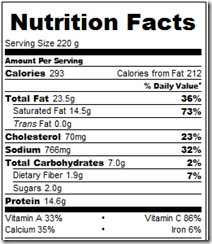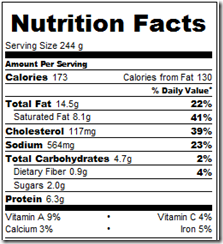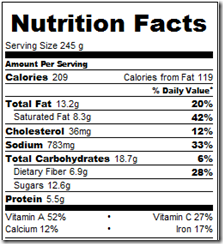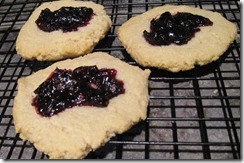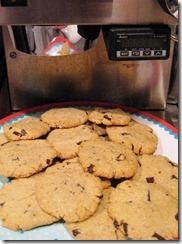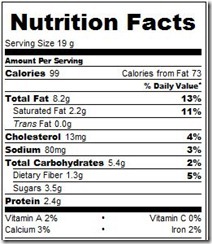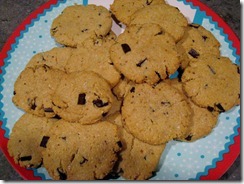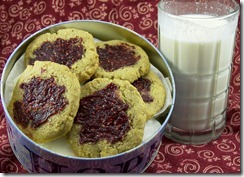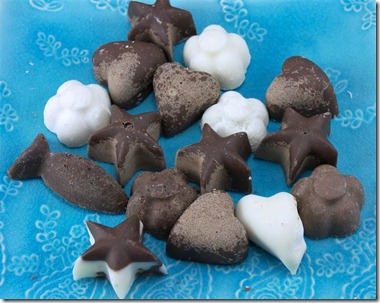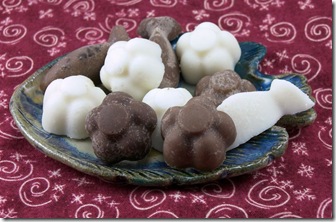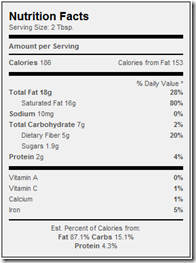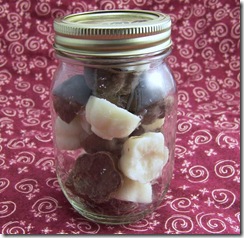Here are three of my favorite soups to make on cold days, either as a main course or side dish. I love serving a cup of hearty soup as an accompaniment to an expensive bit of meat, like lamb chops. These soups all refrigerate well; reheat them gently with a little extra cream to “loosen” the soup the next day. I’ll get pictures up next time I make these!
Broccoli Cheddar Soup
Makes about 8 cups.
In a medium saucepan, melt butter over medium-low heat.
Add the onion, celery, carrot, garlic, and salt to pot. Cook until vegetables are soft, stirring occasionally, about 5-7 minutes.
Sprinkle flour, mustard powder, and pepper over vegetables and stir constantly for 2 minutes to make a roux.
Slowly add chicken broth, stirring, and increase heat to medium-high; bring to a boil.
Add 10-12 small broccoli florets to the pan. Lower heat to a simmer, stirring occasionally, for 10 minutes to allow the starch in the flour time to expand.
Remove the pot from heat and puree soup with a hand-held immersion blender (or, in small batches, puree in a blender or food processor and return to the pot.)
Add the cream and remaining broccoli and bring to low simmer.
Add the cheese in small handfuls and cook over low heat, stirring until each addition has melted before adding the next (this helps prevent the cheese from getting a grainy texture.)
Serve warm, topped with extra cheese.
Notes: This soup really needs the starch in the flour (I use potato flour to avoid gluten), otherwise the cheese doesn’t stay suspended in the broth and separates out into an ugly mess. I’m trying to work on a recipe that doesn’t use even that small amount of starch. 1 tbsp of potato flour has about 8g of carbs, which is about 1 extra gram per cup. The white pepper is recommended to avoid little black specks of regular pepper floating in the soup, but it’s just a presentation suggestion- it doesn’t change the flavor. Regular pepper can be used.
Some people have suggested adding bacon or sausage to the soup- I haven’t tried it, but I bet it would be delicious! This recipe is a basic cheese soup with broccoli added; you can leave out the broccoli, add other veggies with or instead, or just have cheese soup, or cheese soup with sausage, etc. Try baking chicken in the leftover soup for a cheesy chicken broccoli casserole.
Creamy Mushroom Soup
Makes about 5 cups.
- 4 tbsp butter
- 4 cups mushrooms, sliced
- 1/2 cup onion, diced
- 2 cloves garlic, minced
- dash salt, pepper, and cayenne pepper (optional) to taste
- 1 tsp mustard powder
- 2 tsp wild mushroom powder*
- 3 cups chicken broth
- 2 tbsp dry sherry or brandy
- 2 egg yolks mixed with 1/4 c heavy cream
Melt butter in a large skillet over medium-low heat.
Cook mushrooms, onions, and garlic in butter for about 30 minutes over medium-low heat, stirring occasionally, until the mixture is thick and the liquid from the butter and vegetables is almost syrupy.
Add the salt, pepper, cayenne (optional), mustard, and wild mushroom powder. Mix well and cook for 5 minutes.
Slowly pour in chicken broth and sherry, stirring, and bring the soup to a simmer.
Whisk a few spoonfuls of the hot soup into the yolk/cream mixture to temper. Slowly whisk yolk mixture into the soup and stir until thickened.
*Wild mushroom powder: Grind dried wild mushrooms in a food processor until powdered.
Notes: Don’t rush on the tempering step! Curdled eggs in your soup is not tasty. Leftover tip- if there’s only a little soup left, reheat it with some extra cream to thin and use it as a sauce atop a steak or chicken. This recipe originally came from Protein Power; I doubled the mushrooms.
Tomato Basil Soup
Makes about 4 cups.
In a medium saucepan, melt butter over medium-low heat.
Add the onion, celery, garlic and salt. Cook until vegetables are soft, stirring occasionally, about 5-7 minutes.
Add canned tomatoes, pepper, and basil and bring to a boil.
Lower the heat to a simmer and cook, stirring occasionally (tomatoes burn easily), for 15 minutes.
Remove the pot from the heat and puree soup with a hand-held immersion blender (or, in small batches, puree in a blender or food processor and return to the pot.)
Add cream to taste and return to a simmer until warmed through. Serve warm, with extra sliced basil and Parmesan cheese as garnish.
Notes: Fresh basil really makes a difference. Fresh basil can usually be found in the veggie cold case at the grocery store.
